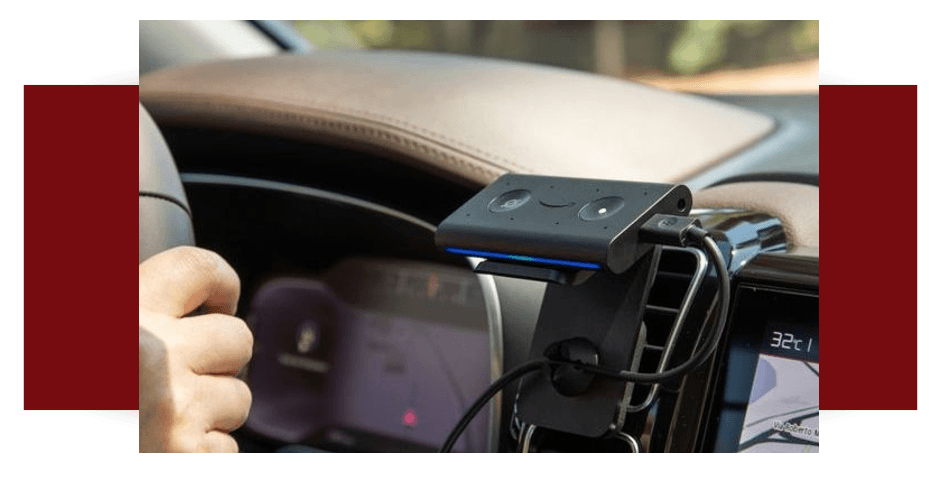November 17, 2021 by Enrique Díaz
Mobility Experience for Creating Alexa Auto Skills - LetMePark Blog

Drivers typically use 2-3 apps while driving, but they would use more if the use case were relevant.
It's essential to focus on personalization and the driving experience, on the journey, on all the activities that take place on the road when we drive, and are specific to those contexts like parking.
Voice replaces sight and touch
Let's do an exercise. Please take your phone and place it on your lap, hands in front, and I want you to send a WhatsApp message without looking at the phone.
Well, it would be something like, Ok Google, send a WhatsApp message to Enrique from LetMePark.
That's what happens to people when they're in the car, where the interaction is completely different.
Until now, the dominant user interface (web and apps) is visual. It involves visual navigation and response, requiring your attention. It requires your eyes and usually your hands. The entire sector is looking at UX, how the buttons look on the screen, etc., but now, another sense enters that replaces sight and touch for certain actions. Voice can provide a hands-free and eyes-free experience.
The user can pay attention to the voice interaction, but their eyes and hands could be busy otherwise, such as driving. This way, we say that it improves road safety as distractions while driving cause 20% of traffic accidents.
Alexa, where can I park around here?
LetMePark will search, reserve the spot if you prefer, and pay for parking automatically. LetMePark uses your device's GPS location to offer you the nearest parking spot and guides you to it.
What is mobility experience?
When we develop an application, the visual interface is programmed—if the function isn't on the screen, it can't be done. However, in the voice interface, there are no limits in terms of inputs; people can say anything.
A voice interface in the car isn't achieved solely by developing a skill. This is where driver data and behavior come into play, and that's why we talk about 'mobility experience' so that the driver, doing what they need to, achieves their goal, in this case focused on parking, but it can also be for car charging or gas stations, etc.
There's a lot of information and guides on how to create a skill, but what's the problem? It's a guided conversation where the fields you need for the mobility world don't exist.
There's no field for addresses, a date and time field that works in German and Spanish. It operates in a scenario where searches have a great deal of variability, and we might say the name of a street, a point of interest (like the national auditorium), or the intersection of two streets, etc. These aren't fields that are input into the system.
In an app, when you press a button, it's very difficult for another button to activate, but how often do we talk to machines and they understand something else? Speaking is not as straightforward.
Voice and data are related
Sometimes the sound isn't clear; it doesn't pick up words well. That's why at LetMePark, we have a cleaning system and also work on when the system makes mistakes to see what biases it produces.
Sometimes the sound isn't clear; it doesn't pick up words well. That's why at LetMePark, we have a cleaning system and also work on when the system makes mistakes to see what biases it produces.
Of course, much of the work is done by Google and Amazon's recognition systems, but excellence lies in providing value to the driver, contextualizing, and cleaning these errors.
For each request made, we know what goes in and what the response is, we track everything, and since we know when there's a failure, we turn it into learning to improve the system.
Here, it's not about talking about voice and then about data. They're related.
It's not that LetMePark is better at voice because we've studied the phrases or questions we need to ask, but because we understand that people don't speak the way we want.
We don't focus on predicting how people will speak, but on measuring and correcting. However, we automate this correction system using artificial intelligence techniques, so that as more users come in, or more mistakes occur, or more countries we open to, the correction process is carried out.